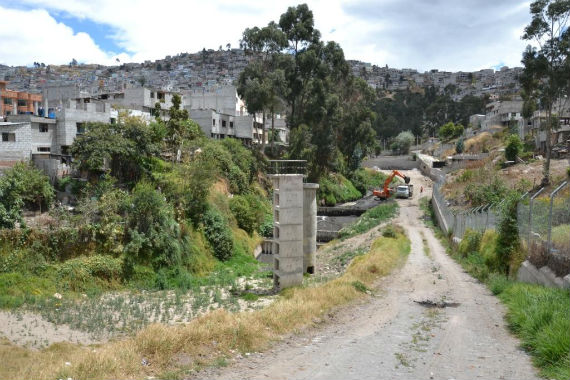
This September, at the Sustainable Development Summit in New York, heads of state will officially adopt the Sustainable Development Goals (SDGs). Among others, they are expected to select SDG 11: the urban SDG, which has the goal of "making cities and human settlements inclusive, safe, resilient and sustainable."
Today, around 50 percent of the world's population lives in cities. By 2050, this will rise to 70 percent. To cope with this influx in a sustainable fashion, our cities will need to change and adapt. We need to think about transforming our cities and our infrastructure, along with our habits, our attitudes, and our entire approach to urban life.
So now is a good time to ask: what are our grandest ambitions for our cities?
Those of us in North America or Europe might imagine a metropolis like New York or London transformed into a gleaming showcase of eco-friendly transport, with green buildings, smart infrastructure, renewable energy, and plentiful space for leisure and relaxation.
We might imagine the biking infrastructure of Amsterdam or Copenhagen scaled up to the level of a megacity, with elevated cycle lanes leading from the outskirts to car-free city centers, where local businesses thrive on the increased pedestrian traffic.
Maybe we imagine a vast evolution in storage technologies, allowing all homes to be self-sufficient in energy. Or maybe we think of how self-driving cars and improved eco-mobility options could make congestion and traffic accidents a thing of the past.
Many of these changes will happen. For some, the technology is already in place or is being rapidly developed. And there is no doubt that most of them would make for better cities: less congestion, less pollution, less waste; more time, more space, more efficiency.
However, if we want to make cities sustainable, we need to look beyond the most famous. The majority of the urban influx will not take place in North America or Europe. Instead, cities in Asia, South America and Africa in particular will continue to grow.
In many ways, this is good news. In cities that are still developing or are in fact being built, local leaders have a huge impact. Many things that would be banal developments in London or New York can be transformational in other parts of the world.
In Quito, Ecuador, for example, the provision and supply of clean water is an ongoing challenge. Quito is 2,800m above sea level, and it is fed by 80 streams or rivers descending from the Pichincha volcano. However, climate change is affecting the water supply for the city, which is home to two million people. Water scarcity and drought are an ever-growing risk. On the other hand, Quito is also endangered by floods and landslides when rain comes in short periods.
Quito is already pursuing significant initiatives to become safe, resilient and sustainable. Its ongoing Water and Sanitation Master Plan 2010-2040 forms part of its broader strategy to respond to climate change -- the first approved strategy for a city in Ecuador. The Master Plan takes into account the expected growth of the city's population to 4 million and the corresponding increase in water demand. It will ensure the maintenance of delicate ecosystems in the Andes that prevent desertification, and will invest in the city's water-distribution network to make it more efficient.

Flood protection in Quito. Photo Credit: Alice Reil, ICLEI-Local Governments for Sustainability
This holistic, long-term approach is transformational for a city like Quito. It looks beyond politics to the future of the citizens. It acknowledges the most significant challenges and sets out a plan to address them -- a plan that can be continued by whichever leader or government is in place over the next 30 years.
Our future is an urban one. That is why we particularly welcome the urban SDG, which will help local leaders to pursue ambitious sustainability actions. It will strengthen the ability of local leaders like Mauricio Rodas, Mayor of Quito, to champion the initiatives they need to make their cities sustainable and livable.
The urban SDG will also support ICLEI, the global local-government association I am heading, in our ongoing efforts to make our cities inclusive, safe, resilient and sustainable, as set out in our 10 Urban Agendas. The urban SDG is in fact the next level of the journey that started with Local Agenda 21 in 1992.
The agenda to be established by the SDG Summit must be seen as a baseline rather than a target. For a full transformation to sustainability, we need to create a race to the top. And the best way to do this is to encourage pioneers, who are most often found at the local level.
This post is part of a series produced by The Huffington Post, "What's Working: Sustainable Development Goals," in conjunction with the United Nations' Sustainable Development Goals (SDGs). The proposed set of milestones will be the subject of discussion at the UN General Assembly meeting on Sept. 25-27, 2015 in New York. The goals, which will replace the UN's Millennium Development Goals (2000-2015), cover 17 key areas of development -- including poverty, hunger, health, education, and gender equality, among many others. As part of The Huffington Post's commitment to solutions-oriented journalism, this What's Working SDG blog series will focus on one goal every weekday in September. This post addresses Goal 11.